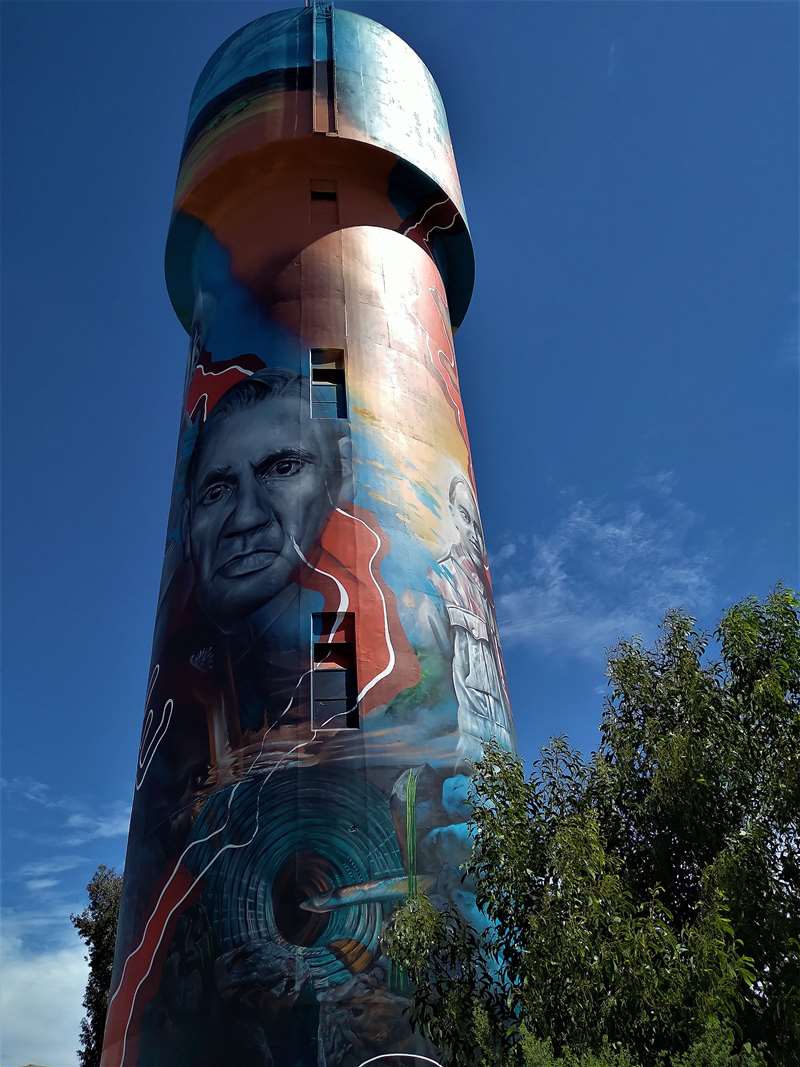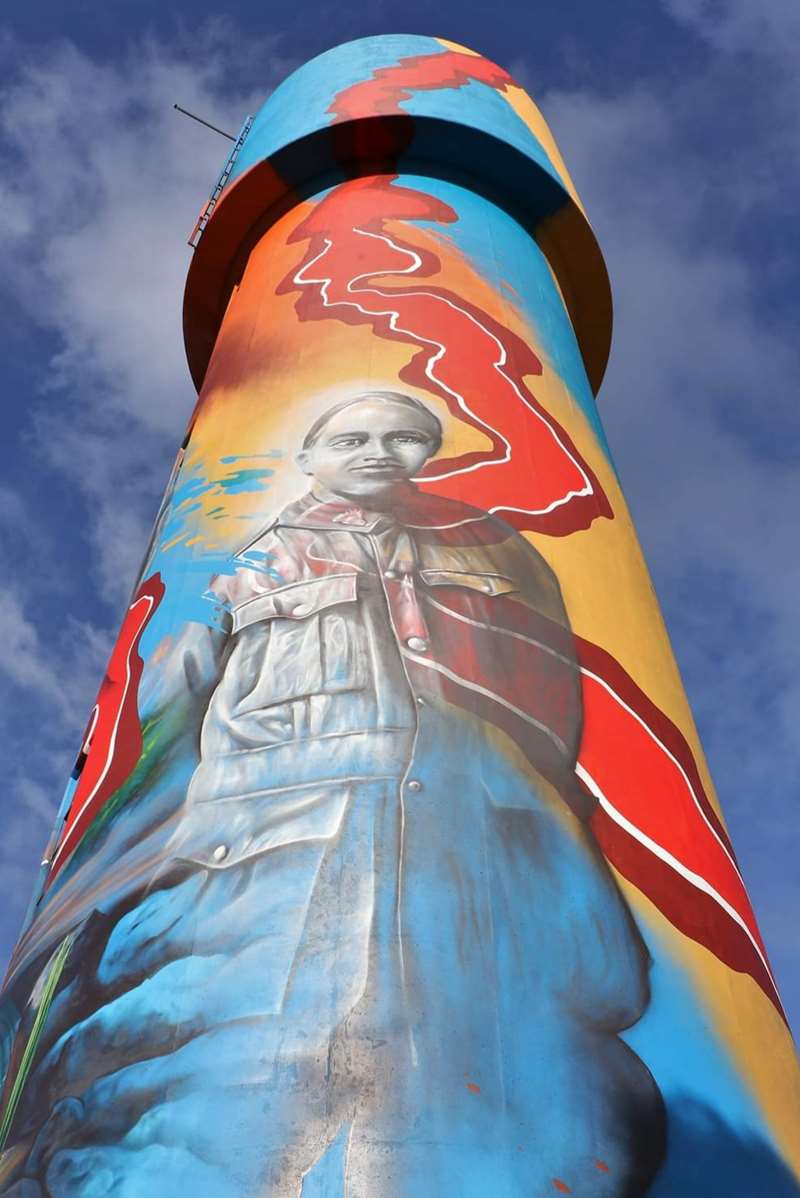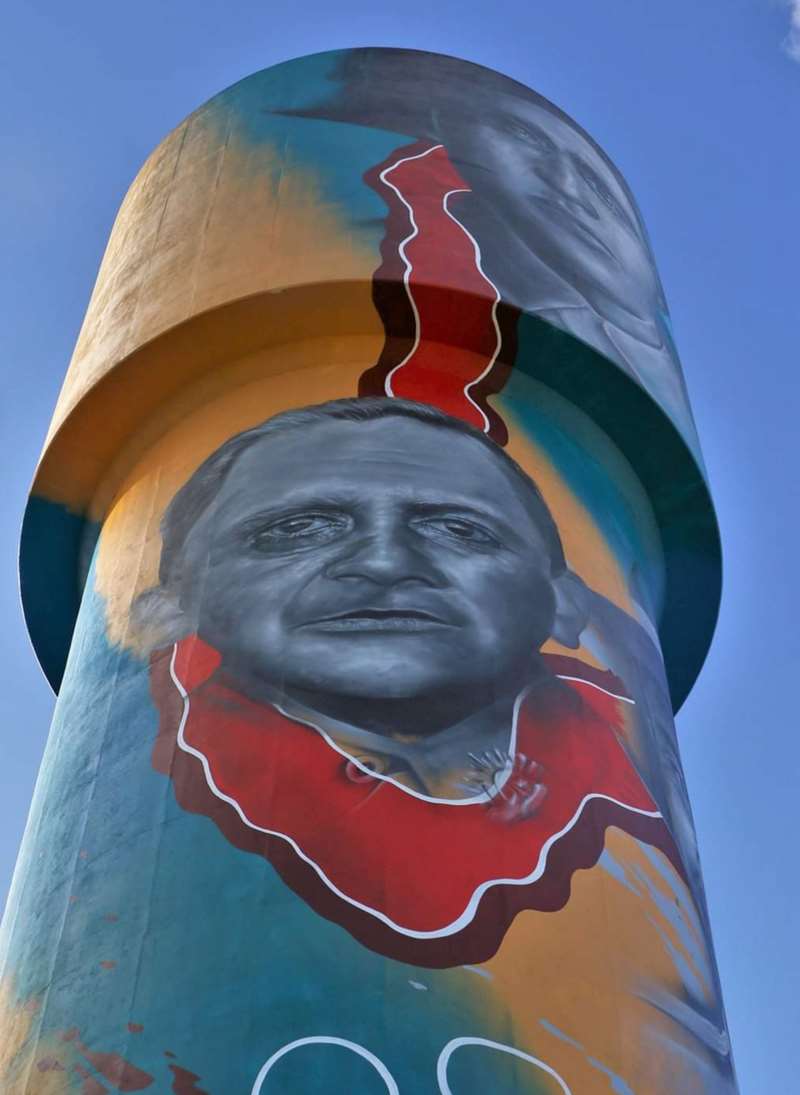Heywood Water Tower Art


This mural depicts five local Gunditjmara men who proudly served their country in two separate wars.

- The four Lovett brothers depicted in this mural Leonard, Frederick, Edward and Herbert served in World War One and Two. They saw frontline action in World War One and home service in Australia during World War Two. Their older brother, Alfred John Henry Lovett (1880 - 1962), fought with the 26th and then 12th Battalion AIF in several battles on the Somme in France during World War One, but due to his age, he was ineligible to serve in World War Two. Younger brother Samuel Alexander Peacock Lovett (1903 - 1955) enlisted and served with 2/5th Battalion AIF against the Vichy French in the Syrian Campaign and against the Japanese in New Guinea. As a result, James and Hannah Lovett had the unique experience of having six sons serve Australia in wartime, with five serving in World One and five in World War Two.
- At least thirteen members of the wider Lovett family served in World War One and World War Two. They included two Lovett women who served in World War Two, Alice Lovett (Women's Auxiliary Australian Air Force) and Pearl Lovett (Australian Women's Army Service). Other Lovett men who served in World War Two were Alfred Patrick Lovett, Leo Lawrence Lovett, James Ebenezer Lovett, Robert Leonard Lovett and Norman Allan Lovett.
- Reginald Saunders served with distinction in World War Two and the Korean War. In World War Two, he saw action in North Africa, Greece, Crete and New Guinea. His service included surviving nearly thirteen months behind enemy lines in German-occupied Crete. During the New Guinea campaign, Reginald's natural leadership qualities lead to his appointment as the first known Aboriginal commissioned officer in the Australian Army (November 1944). Enlisting again during the Korean War, Reginald served as a Lieutenant and then Captain with 3 RAR (3rd Royal Australian Regiment). He led 'C' Company at the battle of Kapyong, when 3 RAR fought off repeated waves of attack from a significantly larger enemy force (April 1951). This action saw 3 RAR awarded the US Presidential Unit Citation for extraordinary heroism in combat.
International street artist Adnate collaborated with Tommy Day to paint this mural with input from Levi Geebung and Salad Bowl Art.

Significance of artwork to Gunditjmara Country
Budj Bim
At the top of the tower is Budj Bim. Budj Bim means 'High Head' and is the place where an Ancestral Creation Being revealed himself to the people 37,000 years ago. The Gunditjmara made productive use of the lava flow by engineering water channels and fish traps and building stone villages allowing them to live sustainably for thousands of years.
Lava Flow The background features elements from Mirring - Country a painting created by Gunditjmara artist Tommy Day. The mural represents the Budj Bim lava flow in red and brown, these colours are used as an ode to Budj Bim, erupting, creating, and shaping the landscape,
Eel Basket
The creative use of the lava stones is represented on the front of the tower by a fish trap featuring an eel basket traditionally woven by Gunditjmara for the purpose of harvesting eels and fish for smoking and eating.
Possum Skin Cloak
The white elements are inspired by the Possum Skin Cloak constructed by Gunditjmara at the Lake Condah Mission in 1872. The designs represent the stone channels and fish traps carved out of country by our ancestors and the water bouncing off the stone formations.
Photo Credits Katie Cunningham and RJ D
Location
29 Hunter Street, Heywood 3304 View Map








